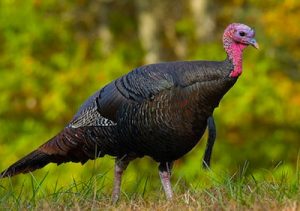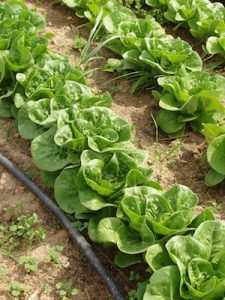Do You Eat Like A Turkey? and Other Gardening Questions
By Sharon Vaughan Smith, Fairfax Master Gardener
As we get closer to celebrating Thanksgiving, have you ever wondered what turkeys eat? In other words, if a turkey had to plan a holiday meal for all its family and friends, what would be on the menu? Do we eat similar things to turkeys?
 As it turns out, turkeys are like people; we are both omnivores. In other words, we eat both plants and animals. Turkeys eat the 5 parts of a plant: roots, stems, leaves, flowers, fruits and seeds of many different kinds of plants. People also eat 5 parts of a plant. Where we differ is turkeys eat a wide variety of different kinds of insects, and we eat them (turkey) and other kinds of meat.
As it turns out, turkeys are like people; we are both omnivores. In other words, we eat both plants and animals. Turkeys eat the 5 parts of a plant: roots, stems, leaves, flowers, fruits and seeds of many different kinds of plants. People also eat 5 parts of a plant. Where we differ is turkeys eat a wide variety of different kinds of insects, and we eat them (turkey) and other kinds of meat.
At your Thanksgiving meal, can you think of what food items at your table represent the 5 parts of a plant — roots, stems, leaves, flowers, fruits and seeds? For example, steamed carrots and mashed potatoes are two of my favorites and they are both roots. Have you ever had stuffing also called dressing at your holiday meal? Many recipes for stuffing/dressing call for the stems and leaves of celery to be added to the cubed bread. The flowers in your meal could be broccoli or cauliflower. The fruits and seeds of a plant could be found in the pies or muffins like pumpkin, apple, or pecan. In other words, eating the 5 parts of a plant is so easy at Thanksgiving.
Have you ever thought about planting a fall garden and have these vegetables at your Thanksgiving meal? When considering what to plant in your fall garden, you need to consider that there are three categories of vegetables — tender, semi-hardy and hardy. Examples of tender vegetable plants are cucumbers, pumpkins and sweet potatoes.

Lettuce
You can find out when the first frost will happen by checking out the Old Farmer’s Almanac online and entering the zip code of where you live. Once you learn the date of first frost and how many days it takes for your seeds to mature and produce fruit, then you count backwards from the first frost date for the total number of days for your vegetable plants to mature to get your planting date. Tender vegetables must be ready to be picked before the first frost. Semi-tender vegetables can keep growing and producing fruit after the first frost until the temperature drops to 29 F. Hardy vegetables will survive until temperatures drop to 20 F. So, if you want to eat like a turkey this Thanksgiving, you have to eat 5 parts of the plant, and if you want to eat what you grow, you have to start thinking about Thanksgiving in the summer.
References
• Planning the Fall Vegetable Garden, Cleve Campbell, July 2016-Vol 2.No.7, Piedmont Master Gardeners
• Vegetable Planting Guide and Recommended Planting Dates, Allen Straw, Southwest Virginia
Agricultural Research and Extension Center Publication 426-331, Virginia Cooperative Extension
• Turkeys Are What They Eat: Weird and Adaptable, Joe Smith, November 2016, Cool Green Science